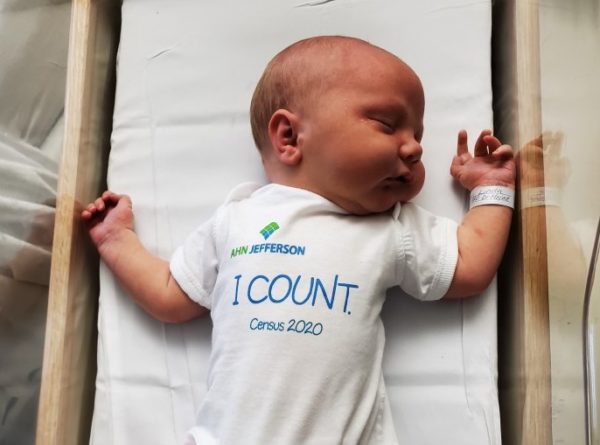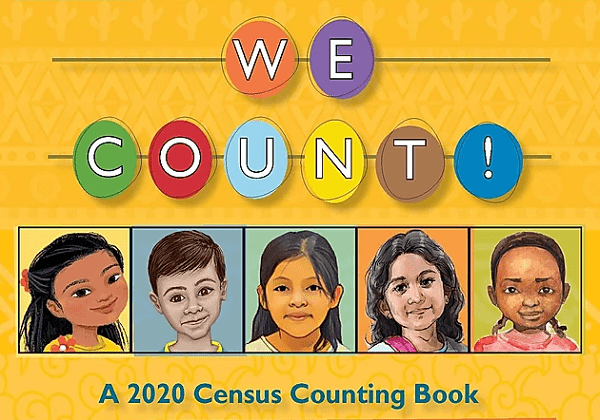
Take 10 minutes to ensure support for your family’s health, education and community
This story first appeared in NEXTpittsburgh, which publishes Kidsburgh.
Ten minutes is all it takes to fill out the U.S. Census online. Every person matters.
Hundreds of billions of dollars depend on census data, from emergency relief funds to school lunches to children’s health insurance. (See the complete list here, on pages 3 to 7.)
This is the first year for online census-taking, and the COVID-19 outbreak makes that all the more important. Anyone at home who has internet access can fill out the form in five to 10 minutes, says Gregg Behr, executive director of The Grable Foundation and chair of the Allegheny County and City of Pittsburgh Complete Count Committee.
“Even in the midst of a pandemic crisis, among the most important things we can do is complete the census,” says Behr. “Federal officials determine where emergency relief money is going in part by using census data, so it’s not just the political representation; it’s also a matter of federal relief services that flow into a place. [Completing the census] is one way we can all help our doctors and nurses and health professionals and those front-line officers.”
With Gov. Tom Wolf’s extended stay-at-home order through April 30, Allegheny County’s census advocates have upped their game to make sure the 2020 count doesn’t fall victim to the coronavirus.
The U.S. Census Bureau has delayed the kickoff of its field operations from the start of this month to April 15. People continue to respond online, by phone or by mail and, in the three weeks since invitations and reminder cards went out to households across America, nearly 40 percent of Allegheny County residents have responded — a rate that’s slightly ahead of Pennsylvania’s and responses nationwide.
“That’s pretty strong,” says Assistant County Manager Andréa Stanford, who is helping to lead the local 2020 census outreach effort. “If your household has responded, you should be confident your response has been taken in.”
Social distancing has led the committee’s partners, such as libraries and community organizations, to change their strategies for educating people about the importance of being counted, Stanford says. Instead of meetings and door knocking that otherwise would have started on April 1, the typical Census Day, they’re texting, making phone calls and reaching out through digital storytelling.
“It’s good to hear from organizations that are doing more resilient strategies for outreach,” she says. “The message is that it’s never been more safe to do your census — online, via phone, or by mail — all without being in contact with a census taker. The push remains self-response.”
Mary Phan-Gruber, CEO of Jefferson Regional Foundation, wants to be sure that parents count children and babies born on or before April 1, even if they’re worried about other things right now. Children, especially those under age 5, often are missed in census taking and that can affect money for programs such as school lunches.
“It’s an exciting opportunity to do civic engagement at a time when civic engagement is isolating ourselves,” she says. “These are babies whose impact will count for their whole childhood, the next decade. While they’re growing up, the funding that their communities get will depend on getting them counted.”
Making kids aware of the census can prompt their parents to act. The Allegheny County Library Association has been working on a “digital storytelling” effort to engage children and families in the importance of being counted, using a census-themed children’s book titled “We Count!”
Other organizations continue to engage people through phone calls and text messages. Brookline-based Casa San Jose, which advocates for the Latinx population, held a one-day door-knocking event in early March, but is now trying text banking.
“We were hoping to knock on many more doors before the social distancing orders,” says Laura Perkins, the organization’s emergency response coordinator. Initially, Casa San Jose invited people to its office for a cup of coffee and would help them fill out the form on a laptop. Since this isn’t possible right now, the organization encourages people to fill out the census over the phone, using the Spanish line: 844-468-2020.
“Because our services have shifted to handing out food to families in need of immediate assistance, we have included a slip of paper with that phone number in each food delivery,” Perkins says. “We are still including the census in the phone conversations we’re having with clients, and we are sharing census information and encouraging the community via social media.”
Khara Timsina, executive director of the Bhutanese Community Association of Pittsburgh, is utilizing a phone bank as well. Approximately 6,000 Bhutanese people may live in the area, he says; the exact number isn’t known. But his organization has contact information for around 850 people, who could help spread the word among families.
“So far, people are telling us it is easy” to fill out the form, says Timsina. “Those who are finding it difficult are calling our office, and all calls are forwarded to staff cell phone numbers, so we’re still able to help. Some families are not sure what to answer in specific questions, such as race. We’re telling them to check ‘other Asian.’”
The census continues for months; the self-response phase lasts through Aug. 14. The deadline for states to hand over their population totals to the federal government is Dec. 31.
With many local organizations educating people and encouraging them to participate, “we think that’s made a difference,” says Phan-Gruber. “Hearing it repeated from lots of trusted resources — many of whom benefit from the funds that get allocated from the census — we think that’s what can make the difference in getting people to understand that they personally benefit.”
